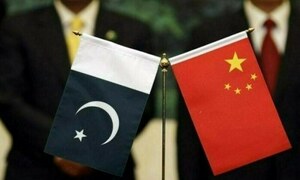In a welcome change, natural gas prices are expected to decline from July 1, 2024. This is not something you hear often. But such was the magnitude of the previous two revisions, that the revenue requirement of the two state-owned gas distribution companies has been determined lower than the existing rates. The determined revenue requirement of Rs897 billion by Ogra is 29 percent lower than the petitioned amount of Rs1.2 trillion. From existing tariffs, this is going to be a slight decrease in the range of 2-5 percent for SSGC and SNGPL, respectively, on an average tariff basis.
This is not to say that consumer end prices will not change for some categories, as the government is well within its rights to use this as an opportunity to lessen some of the cross-subsidy burden from one sector to another. For instance, the unprotected consumers in the first three slabs continue to be cross-subsidized even after the imposition of fixed tariffs and substantial revision in the last year. Similarly, the power sector’s current price at Rs1,050/mmbtu is also lower than the average price of around Rs1,520/mmbtu.

On to the details now, where the devil lies. The sales mix is a key determinant of revenue requirement, and deviations lead to distortions. Of course, this is an estimation exercise and deviations are bound to happen, but to what extent? Consider this. The SNGPL determination, as allowed by Ogra, envisages 42,177 bbtu of natural gas sales for captive power industrial usage. This is a colossal 267 percent higher from the FY24 determination – and a mind-boggling 9 times higher from FY23 actual numbers, and twice that of FY22a actual gas consumption from captive power users.
Why is this worrisome? Besides the obvious staggering increase from a year or two ago, what stands out is that the regulator and the petitioner seem completely oblivious to the reality. The reality is that Pakistan authorities, under the IMF program, have made written commitments and have given repeated assurances that captive power usage will be discouraged to the fullest and be completely made unviable by the end of 2024, via tariffs that match that of imported RLNG.

It is important because the whole premise is built on captive power generation having the second highest share in sales behind only the domestic sector, at a time when the stated government policy is clearly telling otherwise. It takes no rocket scientist to tell the actual consumption will be vastly different, because the IMF is certainly not going to back down from what it terms a key policy reform. This means the deviation will lead to shortfalls, as more consumption will likely be tilted in favor of domestic and power sectors – who on average, pay less than the national average price.
The problem compounds as the power sector offtake from the system is erratic, as RLNG-based power generation goes way down the merit list, especially in the off-peak season. This results in more diversion to domestic consumers, because government-to-government international contractual commitments of take-or-pay on RLNG mean imported gas will be here, even if there is reduced demand from power and general industries, as has been the case in the last two years. The shifting of RLNG-based fertilizer plants has also resulted in more RLNG being diverted to the domestic sector.
On industrial consumption, SNGPL has assumed an improvement in blended ratio from last year, which might be a tall ask, given reduced demand from the power and fertilizer sectors. The petitioner’s prayer based on economic revival leading to a 2.5x increase in industrial consumption has been approved by the regulator. The failure of the power sector to consume RLNG as per intimated demand is a serious issue, one that results in increased diversion to the domestic sector, and also leads to saturation of system pack, which leads to financial implications of demurrages and other associated costs. All in all, the revenue determination is based on very unrealistic assumptions, and could potentially create more trouble deeper in FY25.




















Comments
Comments are closed.